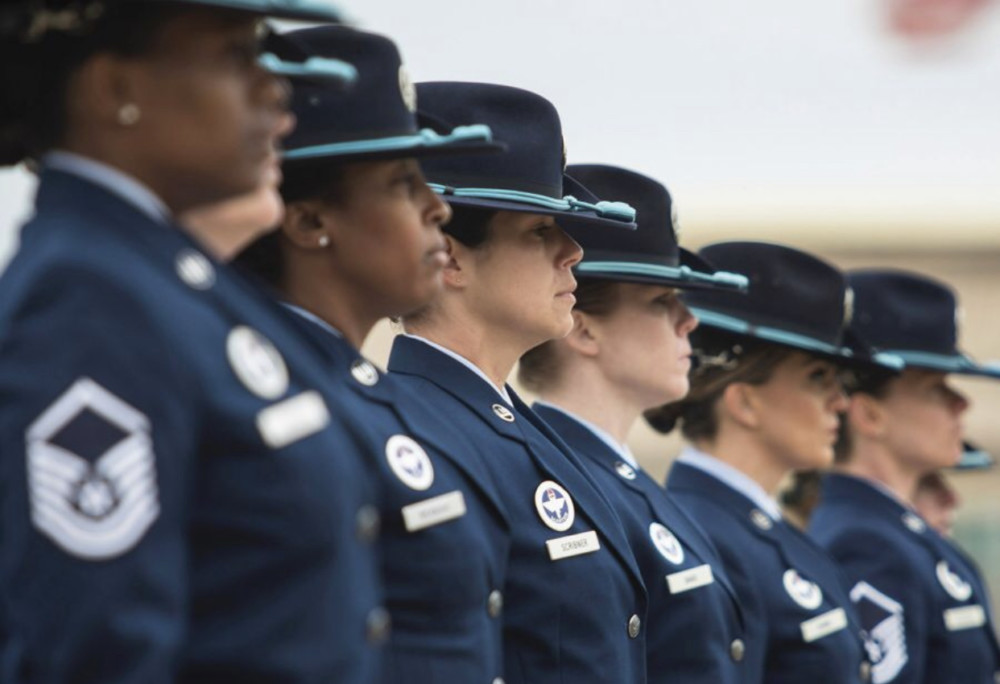By Rose L. Thayer
Stars and Stripes
WWR Article Summary (tl;dr) To address the challenges facing women seeking VA health care services, the House Committee on Veterans’ Affairs on Thursday launched a bipartisan women veterans task force.
Stars and Stripes
Women seeking health care at Department of Veterans Affairs facilities often have longer wait times for appointments than men and one in four have reported being sexually harassed or had their military service questioned, House lawmakers and women veterans said Thursday.
“[Women] do not feel welcome or safe at VA facilities” and “were significantly more likely to report delaying or missing care,” said Army veteran Joy Ilem, national legislative director for Disabled American Veterans. “There is no bigger barrier to care than a culture that does not embrace women vets or at best makes them feel marginalized.”
To address the challenges facing women seeking VA health care services, the House Committee on Veterans’ Affairs on Thursday launched a bipartisan women veterans task force with Rep. Julia Brownley, D-Calif., as its chairwoman.
That announcement and news conference about the new task force was followed by a congressional hearing where Ilem spoke alongside four other women veterans and an official from the VA’s Women Health Services.
“Our mission to increase the visibility of the 2 million women veterans living in the United States and to promote inclusivity and equitable access to resources, benefits, and healthcare for women veterans,” Brownley said during the news conference on Capitol Hill to announce the task force.
The task force is the first organized effort dedicated to women veterans and the inequities that they endure, she said.
Culture, health care, economic opportunities and veteran access are the four main points of focus for the task force. Sen. Tammy Duckworth, D-Ill., plans to launch a similar initiative in the Senate, Brownley said.
The hearing of the health subcommittee of the House VA committee met following the announcement to hear women veterans testify about the barriers and challenges that they face when accessing the VA, primarily for health care.
Only about 22 percent of women veterans use the VA for their health care, making them about 7 percent of all veterans using the VA, retired Navy Capt. Lory Manning, director of government relations for Service Women’s Action Network, said citing a VA report.
When women do go to the VA, they are “irked” when asked for their husband’s Social Security number when checking in, and then annoyed again when denied a free cup of coffee, because it’s for the veterans. “These slights seem minor but they [build] over time leaving women veterans frustrated and disheartened,” Manning said. “The invisibility becomes more damaging when the gender-specific needs of women veterans are ignored, as happens for example when they are sometimes issued prosthetic devices designed for men. This should never happen.”
The damage becomes major when leadership makes tough decisions without understanding the need for women programs and choose to reallocate funding from programs for women because it “helps many while hurting only a few,” she said.
Manning, along with Lindsay Church, CEO of Minority Veterans of America, also said in opening statements that their organizations support changing the motto of the VA, because its exclusive language greets women as they enter facilities.
The agency’s official motto is a quote from President Abraham Lincoln’s second inaugural address in 1865: “To care for him who shall have borne the battle and for his widow, and his orphan.” VA Secretary Robert Wilkie has said he opposes changing the motto, but women lawmakers have pledged to fight him on this front.
Lincoln’s words are a “physical representation of the invisibility” women experience,” Church said. “Changing the motto won’t by itself address the deep cultural divide, [but it is] a step in the right direction.”
Rep. Neal Dunn, R-Fla., the subcommittee’s ranking member, suggested during the hearing that vouchers for community-based care could serve as a way to help women get better access to care.
Ilem said she worried this could create fragmented care for women that would result in gaps of understanding larger issues women veterans face.
“We need to make sure the providers women are going to that they are going to get quality care with expertise in the conditions and what exposures women have experienced and what conditions they are being treated for,” she said.
Ginger Miller, president and CEO of Women Veterans Interactive, an organization that advocates on behalf of women veterans, said she would support an initiative like this as a stopgap solution.
“The VA has been researching women veterans for years. We’re not aliens, we’re women. There are plenty of doctors out in the private sector that support and service women every day,” she said. “Why should I have to suffer and walk through the halls getting cat-called and all these different things while you figure it out?”
Patricia M. Hayes, chief consultant for Women’s Health Services with the Veterans Health Administration, explained what the VA is doing for women and their efforts to change the culture.
To address the harassment from male veterans, she said the VA launched an education program called End Harassment. It teaches men that what they might see as a compliment is harassment.
“This behavior disrupts care,” Hayes said. “It disrupts to whole system…I think that on the issue of culture change–we really can’t say enough about how that is a problem we are focused on. VA is not only stepping up, but we have to step up. We have to end the harassment.”
Brownley said she saw Thursday’s events as the beginning of the women veterans’ “Me Too” moment, referencing to the movement that grew from exposing gender discrimination in Hollywood.
“We need to make it into a movement,” she said.














































































































































































































































































































































































